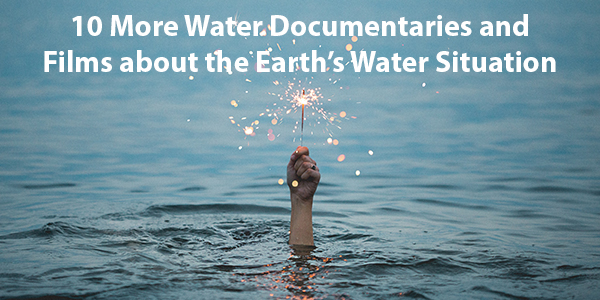Here are 10 more documentaries, films, and video portals about the various water issues facing humanity. This is the sequel to my previous post that listed 10 Water Documentaries.
1. Last Call at the Oasis
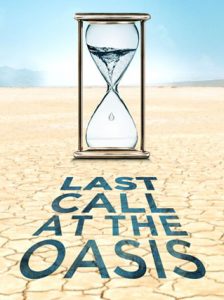 The global water crisis will be the central issue facing our world this century. We can manage this problem, but only if we are willing to act now. Last Call at the Oasis is a powerful new documentary that shatters myths behind our most precious resource. This film exposes defects in the current system, shows communities already struggling with its ill-effects and highlights individuals championing revolutionary solutions during the global water crisis. Firmly establishing the global water crisis as the central issue facing our world this century, the film posits that we can manage this problem if we act now.
The global water crisis will be the central issue facing our world this century. We can manage this problem, but only if we are willing to act now. Last Call at the Oasis is a powerful new documentary that shatters myths behind our most precious resource. This film exposes defects in the current system, shows communities already struggling with its ill-effects and highlights individuals championing revolutionary solutions during the global water crisis. Firmly establishing the global water crisis as the central issue facing our world this century, the film posits that we can manage this problem if we act now.
The documentary sheds light on the vital role water plays in our lives, exposes the defects in the current system, shows communities already struggling with its ill effects and introduces us to individuals who are championing revolutionary solutions, such as activist Erin Brockovich and distinguished experts Peter Gleick, Alex Prud’homme, Jay Famiglietti and Robert Glennon.
Last Call At The Oasis is available for free on Amazon Prime Video.
2. In Our Water
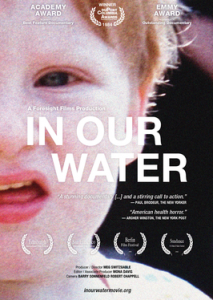 In this Oscar nominated documentary, a New Jersey family discovers their well is being poisoned by a landfill while local and state officials assure them their water is safe to drink. A 5-year saga of bureaucratic neglect and court inaction reveals the Kaler’s drinking water could have been bottled as paint remover. The landfill is later declared a Superfund site but as of 2018 has yet to be “cleaned up”.
In this Oscar nominated documentary, a New Jersey family discovers their well is being poisoned by a landfill while local and state officials assure them their water is safe to drink. A 5-year saga of bureaucratic neglect and court inaction reveals the Kaler’s drinking water could have been bottled as paint remover. The landfill is later declared a Superfund site but as of 2018 has yet to be “cleaned up”.
As regulations protecting our water are again under attack, IN OUR WATER is both cautionary tale and map to activism. Educators, environmentalists, government bureaucrats, politicians, citizens and water drinkers everywhere can benefit from experiencing this exceptional movie.
Nominated for Best Documentary, Features at the Academy Awards. Nominated for Best Documentary at the Chicago International Film Festival. Winner of the Columbia DuPont Award for Journalistic Excellence.
The documentary is available by streaming with your public library card or university login.
3. Liquid Assets
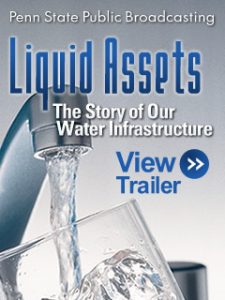 Liquid Assets, a ninety-minute documentary, tells the story of essential infrastructure systems: water, wastewater, and stormwater. These systems — some in the ground for more than 100 years — provide a critical public health function and are essential for economic development and growth. Largely out of sight and out of mind, these aging systems have not been maintained, and some estimates suggest this is the single largest public works endeavor in our nation’s history.
Liquid Assets, a ninety-minute documentary, tells the story of essential infrastructure systems: water, wastewater, and stormwater. These systems — some in the ground for more than 100 years — provide a critical public health function and are essential for economic development and growth. Largely out of sight and out of mind, these aging systems have not been maintained, and some estimates suggest this is the single largest public works endeavor in our nation’s history.
Exploring the history, engineering challenges, and political and economic realities in urban and rural locations, the documentary provides an understanding of the hidden assets that support our way of life. Locations featured in the documentary include Atlanta, Boston, Herminie (Pennsylvania), Las Vegas, Los Angeles, Milwaukee, New York City, Philadelphia, Pittsburgh, and Washington, D.C.
The documentary is available for purchase at Penn State Media Sales.
4. Waters’ Journey: Everglades
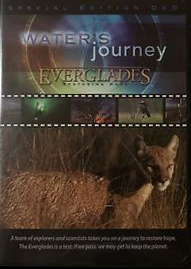 Waters’ Journey: Everglades explores how the Everglades ecosystem has been pushed to the brink of collapse and what it’ll take to restore it. A crew of filmmakers, adventurers and scientists devote two full episodes to explore this situation. One team of environmental detectives sets out by canoe, kayak and foot to explore the historic beauty of the river of grass, while another team embarks on a parallel journey through farms and cities built on lands that were drained for development. The teams reunite at the end of the system, examining how the health of the Everglades affects Florida Bay, the coral reefs, and beyond.
Waters’ Journey: Everglades explores how the Everglades ecosystem has been pushed to the brink of collapse and what it’ll take to restore it. A crew of filmmakers, adventurers and scientists devote two full episodes to explore this situation. One team of environmental detectives sets out by canoe, kayak and foot to explore the historic beauty of the river of grass, while another team embarks on a parallel journey through farms and cities built on lands that were drained for development. The teams reunite at the end of the system, examining how the health of the Everglades affects Florida Bay, the coral reefs, and beyond.
The film’s website provides lots of resources and ways for you to learn more about the plight of the Everglades. They have put together some amazing animations showing how the Everglades are polluted by stormwater runoff.
While only trailers are available online, you can purchase the Waters’ Journey: Everglades documentary DVD here.
5. Watermark
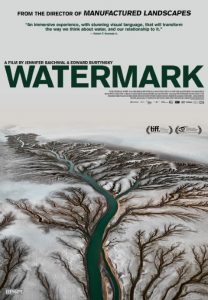 Watermark is a feature documentary from multiple-award winning filmmakers Jennifer Baichwal and Nick de Pencier, and renowned photographer Edward Burtynsky. The film brings together diverse stories from around the globe about our relationship with water: how we are drawn to it, what we learn from it, how we use it and the consequences of that use. We see massive floating abalone farms off China’s Fujian coast and the construction site of the biggest arch dam in the world – the Xiluodu, six times the size of the Hoover. We visit the barren desert delta where the mighty Colorado River no longer reaches the ocean, and the water-intensive leather tanneries of Dhaka.We witness how humans are drawn to water, from the U.S. Open of Surfing in Huntington Beach to the Kumbh Mela in Allahabad, where thirty million people gather for a sacred bath in the Ganges at the same time. We speak with scientists who drill ice cores two kilometers deep into the Greenland Ice Sheet, and explore the sublime pristine watershed of Northern British Columbia. Shot in stunning 5K ultra high-definition video and full of soaring aerial perspectives, this film shows water as a terraforming element, as well as the magnitude of our need and use. In Watermark, the viewer is immersed in a magnificent force of nature that we all too often take for granted- until it’s gone.
Watermark is a feature documentary from multiple-award winning filmmakers Jennifer Baichwal and Nick de Pencier, and renowned photographer Edward Burtynsky. The film brings together diverse stories from around the globe about our relationship with water: how we are drawn to it, what we learn from it, how we use it and the consequences of that use. We see massive floating abalone farms off China’s Fujian coast and the construction site of the biggest arch dam in the world – the Xiluodu, six times the size of the Hoover. We visit the barren desert delta where the mighty Colorado River no longer reaches the ocean, and the water-intensive leather tanneries of Dhaka.We witness how humans are drawn to water, from the U.S. Open of Surfing in Huntington Beach to the Kumbh Mela in Allahabad, where thirty million people gather for a sacred bath in the Ganges at the same time. We speak with scientists who drill ice cores two kilometers deep into the Greenland Ice Sheet, and explore the sublime pristine watershed of Northern British Columbia. Shot in stunning 5K ultra high-definition video and full of soaring aerial perspectives, this film shows water as a terraforming element, as well as the magnitude of our need and use. In Watermark, the viewer is immersed in a magnificent force of nature that we all too often take for granted- until it’s gone.
The documentary is available via DVD on Netflix.
6. Poisoned Waters
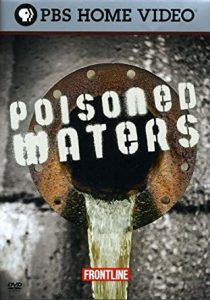 More than two decades after the Clean Water Act was supposed to make America’s waters clean enough for swimming and fishing again, two iconic waterways — the great coastal estuaries of Puget Sound and the Chesapeake Bay — are in perilous condition. With polluted runoff still flowing in from industry, agriculture and massive suburban development, scientists fear contamination to the food chain and drinking water for millions of people. A growing list of endangered species is also threatened in both estuaries. As a new president, Congress and the states set new agendas and spending priorities, FRONTLINE correspondent Hedrick Smith examines the rising hazards to human health and the ecosystem, and why its so hard to keep our waters clean.
More than two decades after the Clean Water Act was supposed to make America’s waters clean enough for swimming and fishing again, two iconic waterways — the great coastal estuaries of Puget Sound and the Chesapeake Bay — are in perilous condition. With polluted runoff still flowing in from industry, agriculture and massive suburban development, scientists fear contamination to the food chain and drinking water for millions of people. A growing list of endangered species is also threatened in both estuaries. As a new president, Congress and the states set new agendas and spending priorities, FRONTLINE correspondent Hedrick Smith examines the rising hazards to human health and the ecosystem, and why its so hard to keep our waters clean.
Watch the entire documentary here:
7. Troubled Waters: A Mississippi River Story
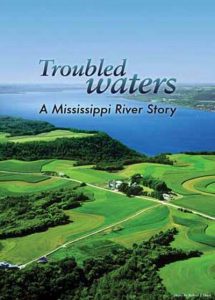 The Emmy Award-winning Troubled Waters: A Mississippi River Story tells the story of the unintended yet severe consequences of farming along the Mississippi, and the efforts being taken to reverse this damage. America’s heartland boasts some of the world’s most productive farmland, but this bounty has come with a price. Excess crop fertilizers are contaminating the nation’s rivers, lakes and aquifers, while at the same time precious soil is washing away.
The Emmy Award-winning Troubled Waters: A Mississippi River Story tells the story of the unintended yet severe consequences of farming along the Mississippi, and the efforts being taken to reverse this damage. America’s heartland boasts some of the world’s most productive farmland, but this bounty has come with a price. Excess crop fertilizers are contaminating the nation’s rivers, lakes and aquifers, while at the same time precious soil is washing away.
The film traces the development of America’s bountiful harvest and examines its effect on the legendary river, as well as the “dead zone” created in the Gulf of Mexico. Knitting together federal energy, farm and environmental policies, the film makes a compelling case for revamping US agricultural policy and practices. It also helps viewers to grasp a profound truth – that a single drop of water in the upper Midwest has an impact far downstream.
Through beautiful photography and narrative, Troubled Waters emphasizes solutions, providing a hopeful blueprint for progress and positive change. The film tells the stories of farmers, scientists and citizens who are pursuing more sustainable land-use practices that meet the goals of an ambitious, food-producing nation, while ensuring the long-term health of its most precious natural resources.
8. Dead Harvest
Ray McNally examines the devastating impact that the federal water policy and environmental lawsuits are having on Central Valley farms and families.
9. A World Without Water
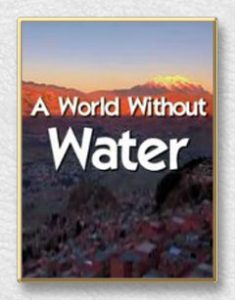 As the highest water bills ever land on doormats across the UK this April, this film investigates the future of the world’s water, and paints a disturbing picture of a world running out of the most basic of life’s essentials.
As the highest water bills ever land on doormats across the UK this April, this film investigates the future of the world’s water, and paints a disturbing picture of a world running out of the most basic of life’s essentials.
8 year old Vanessa and her parents have to walk almost a mile down the cliffs of El Alto in Bolivia to collect water from an unreliable well every day. Yet, they live just a few hundred metres from their city’s main water treatment plant and can see millions of gallons just beyond the barbed wire fence. They are victims of waters increasing commodification.
In 2000, the members of of the United Nations committed to halving the number of people in the world without access to water, by 2015. But within our lifefime over half of the world’s population will be living without access to safe water and sanitation.
The struggle for this precious resource and the battle for its ownership is explored through compelling stories of families living in Bolivia, Detroit, Dar Es Salaam and Rajestan. As the background to these stories we explore the conflicts over the future of water and see how even those living in the relatively water-rich UK hold the survival of the planet in our hands.
You can watch the documentary on TrueVision’s website.
10. A Thirsty World
The water documentary “A Thirsty World” combines French photographer Yann Arthus-Bertrand’s aerial photography with down-to-earth messages, a mélange that calls attention to problems of water security on a global scale.
Bertrand’s images remind viewers of water’s power and its potential to accomplish great missions, from carving mountainsides to delivering nutrients to fields to sustaining life.
Within this majestic framework, Directors Baptiste Rouget-Luchaire and Thierry Piantanida zoom in their focus to individuals in 20 countries around the world. They show their struggles to confront issues of water quality and quantity.
The film showcases locations where individuals are changing the ways that they manage water. The audience sees images of Cambodian farmers who are using water in a more efficient way, and Indian farmers who are choosing crops that require less water, for example.


